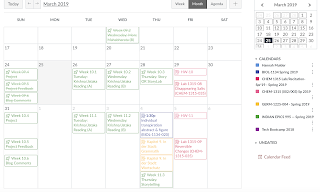Feedback Strategies
I am going to start off by saying, I am not very confident about giving feedback about other written works by my classmates. Writing has been a personal obstacle for me because I have only done it for a grade and have never really liked to do it no matter how much I have tried to; with that being said I do not think any of my written works are great. Since I am not into the whole writing scene, and I am not very good at it, I do not think I will be the best person to give feedback to others, but I will try my best.
The Difference between Praise and Feedback:
In this blog post, there were a couple of outlooks on praise and a final synopsis about how humans can mix up praise and feedback. I learned from this article that asking questions and making the person think about the question might be a good form of feedback. I also learned that being specific is a great feedback strategy. I also learned some about the debate between processing praise and no praise at all, which I do not think relates to this particular situation, but it was interesting to read about the correlation linking child development and praise.
How to Give Feedback Without Sounding Like a Jerk:
I decided to read this article because I have been known to be very blunt, which is not my intention. What I took from this article, was that I need to explain my criticism first and then give it. I also need to make sure not to seem like I am above my classmates. Which should not be an issue because I am very insecure and nervous to give feedback to my classmates. The third tip was to ask if the person wants feedback. This does not appear to be an issue in this course because we are all giving each other feedback based off the instructions given to us by our professor. The final tip was to make sure the comments are not manipulative and allow both parties to express their concerns without shutting one party completely down.
The below picture was based off of the idea presented directly above, that feedback should be open communication between the critic and the person being critiqued.
The Difference between Praise and Feedback:
In this blog post, there were a couple of outlooks on praise and a final synopsis about how humans can mix up praise and feedback. I learned from this article that asking questions and making the person think about the question might be a good form of feedback. I also learned that being specific is a great feedback strategy. I also learned some about the debate between processing praise and no praise at all, which I do not think relates to this particular situation, but it was interesting to read about the correlation linking child development and praise.
How to Give Feedback Without Sounding Like a Jerk:
I decided to read this article because I have been known to be very blunt, which is not my intention. What I took from this article, was that I need to explain my criticism first and then give it. I also need to make sure not to seem like I am above my classmates. Which should not be an issue because I am very insecure and nervous to give feedback to my classmates. The third tip was to ask if the person wants feedback. This does not appear to be an issue in this course because we are all giving each other feedback based off the instructions given to us by our professor. The final tip was to make sure the comments are not manipulative and allow both parties to express their concerns without shutting one party completely down.
The below picture was based off of the idea presented directly above, that feedback should be open communication between the critic and the person being critiqued.




Comments
Post a Comment